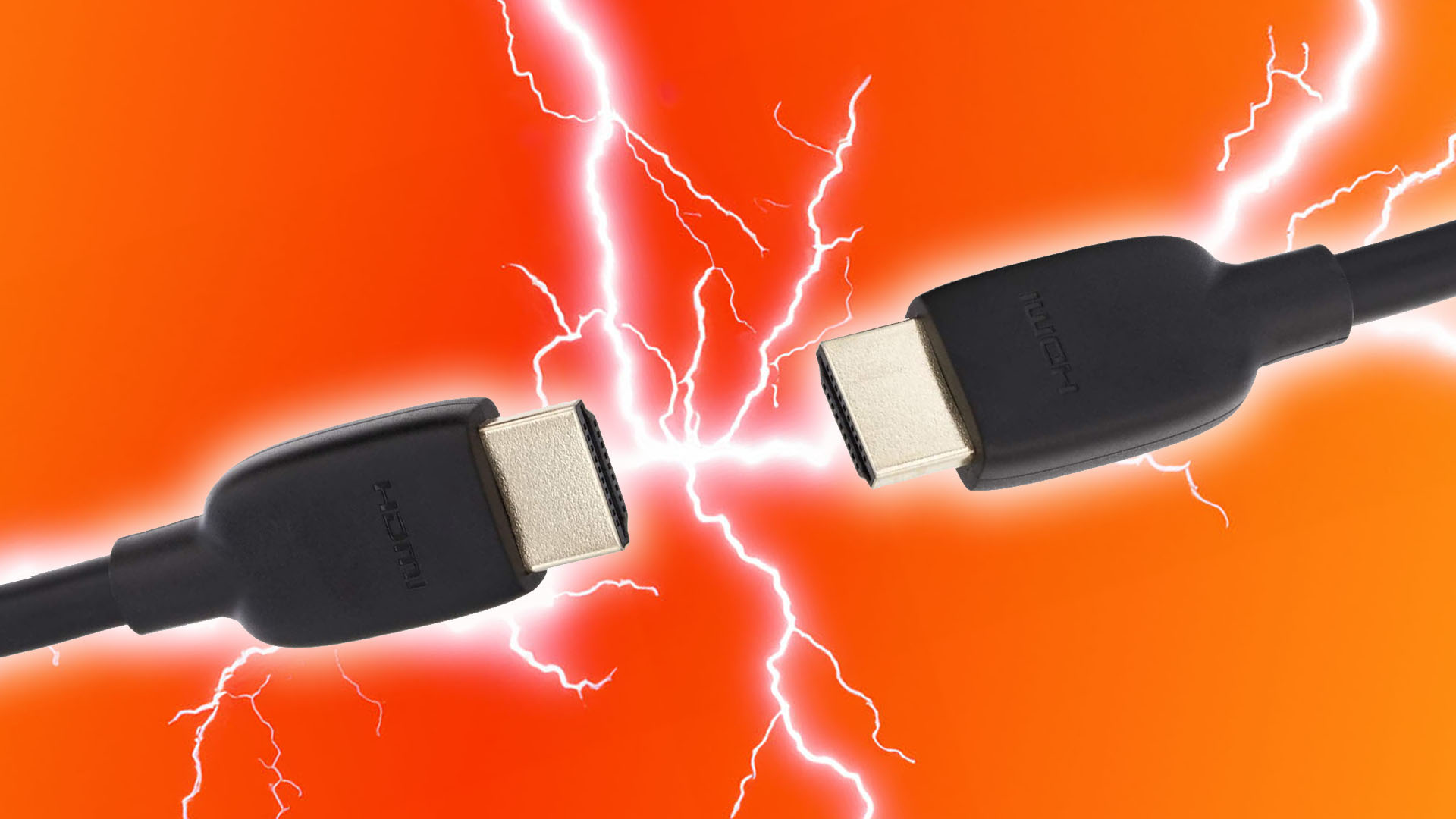
HDMI 2.2 could be launching in just a few weeks, according to a new leak, with the new standard set to bring improvements in bandwidth that allow for higher resolutions and refresh rates. That could mean next-generation graphics cards and gaming monitors might be able to push beyond the current limit of 4K at 240Hz, without the need to resort to image compression.
With displays such as the LG Ultragear 32GS95UE only just arriving and bringing 4K at 240Hz gaming with them, HDMI 2.2 isn’t likely to usher in a new generation of even faster best gaming monitor contenders just yet. However, if this rumor is true, it won’t be too long before we all start coveting even faster or higher-resolution displays.
The reveal of this possible announcement comes from Italian tech site, Digital Day, which claims it has seen a press release from the HDMI forum announcing the new standard. The announcement says that “[t]he new specification, featuring next-gen HDMI technology and increased bandwidth, will support a wide range of higher resolutions and refresh rates, supported by a new HDMI cable [machine translated].”
It also goes on to say the announcement of HDMI v2.2 will be made at the CES 2025 tech trade show in Las Vegas, in just three weeks.
Despite the claim of having seen a full press release of the announcement, the site doesn’t go on to share any further details of the standard, though. As such, we don’t know the new maximum bandwidth and resultant maximum resolution and refresh rate combinations you’ll be able to achieve over these cables.
The current HDMI 2.1 specification supports resolutions up to 10,240 x 4,320 (10K) at 120Hz when Display Stream Compression (DSC) is engaged, but is limited to 7,680 x 4,320 (8K) at 60Hz without compression. Meanwhile, for more familiar 4K resolutions, HDMI 2.1 can hit 240Hz with DSC and 4K at 120Hz without DSC, thanks to the standard’s 48Gbit/s total bandwidth.
As such, we could speculate that the new standard might increase bandwidth by 50% to 72Gbit/s, which would allow for 4K at 240Hz without DSC or 4K at 360Hz with DSC. Or, perhaps the new standard could fully double the bandwidth, which could unlock 480Hz 4K gaming, or the ability to play at 8K at 120Hz.
What we do know from this release is that it mentions the use of a new cable. This tallies with previous HDMI standard updates, with HDMI 2.1 requiring a properly rated cable to reach its maximum speeds. This could also mean the new speeds are only available on shorter lengths of cable than the current 15m (50ft) limit for HDMI 2.1.
As for how this compares to DisplayPort, the most recent DisplayPort standard is 2.1, which has a maximum bandwidth of 80Gbit/s. This in theory allows for 4K refresh rates of over 300Hz but in practice we’ve only yet seen 4K at 240Hz displays.
Moreover, many displays that hit this refresh rate and resolution combination don’t actually yet use DisplayPort 2.1. One such example is the LG 32GS95UE, which uses DSC over DisplayPort to get its full 4K at 240Hz combination. Ironically, though, its HDMI ports are 2.1, so it can deliver this combination without compression. Who said display standards were confusing…
What’s more, no Nvidia cards yet support DisplayPort 2.1, with the RTX 40 range instead sticking to DisplayPort 2.0. Only AMD’s Radeon RX 7000 cards support DisplayPort 2.1, though we expect both the upcoming RTX 5000 series and RX 8000 series GPUs to support DisplayPort 2.1 when they’re also announced at CES.
So, HDMI 2.2 isn’t going to become an instant must-have by any stretch, even if it does provide a step-change in graphics throughput. Not only are the resolution and frame rate combinations it can deliver far beyond what many gamers care about, but it’s also likely to be well into next year, if not beyond, that new products based on the standard will be widely available.
For more on what we can expect from CES 2025, check out our Nvidia RTX 5090 and AMD RX 8800 XT guides, as both of these GPUs are expected to launch at the show.












Leave a Reply